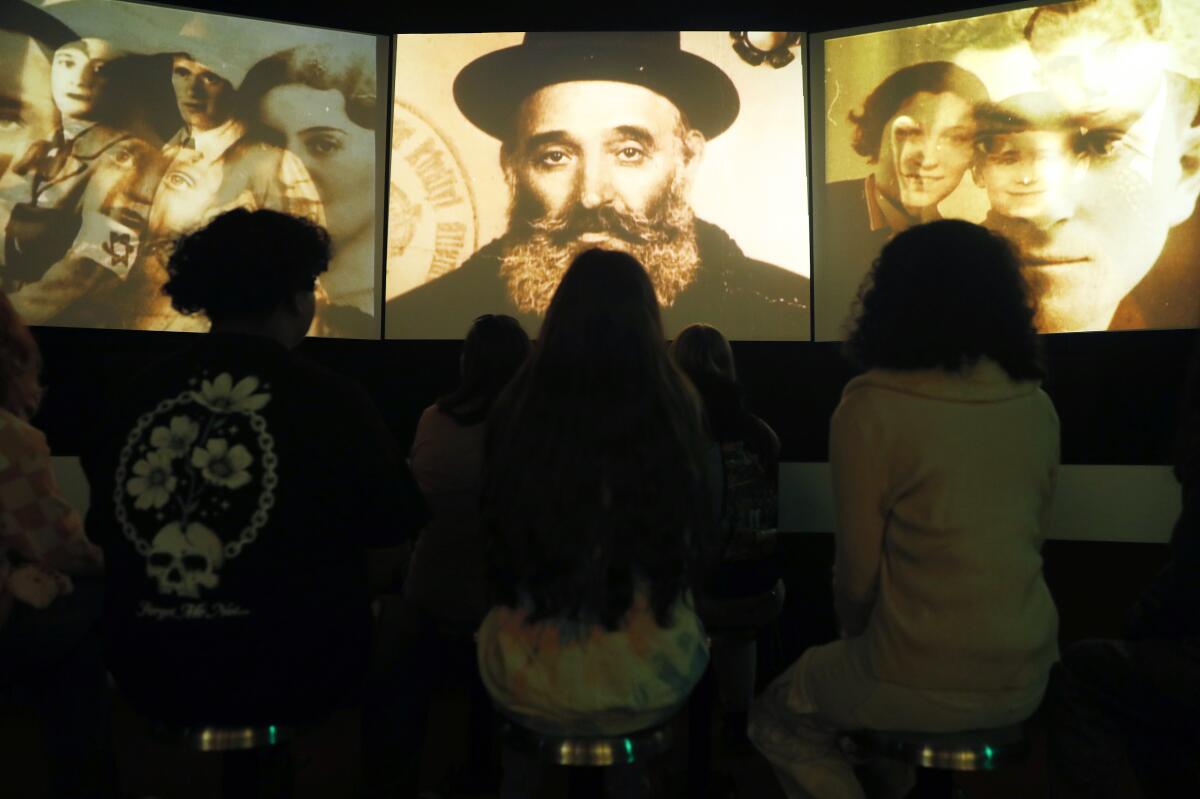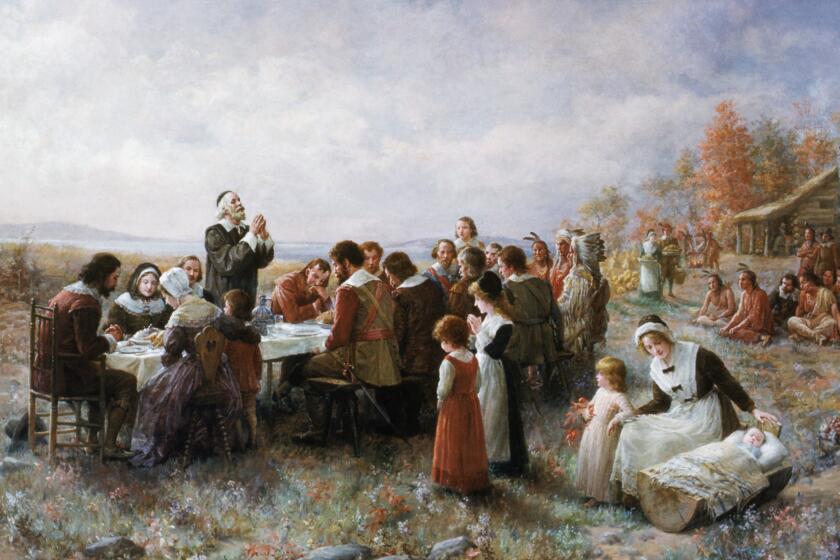Apodaca: It’s not a perfect world, but we can guide students toward a better one

- Share via
It can often feel as if a familiar pattern plays out when hate incidents involving our local schools hit the news.
A shocking episode prompts community outrage and calls for measures to be taken. School leaders vow to respond in a thoughtful but robust manner. Those efforts are criticized by a vocal minority who see conspiracies and hidden agendas in attempts to promote kindness and inclusivity.
After a while the whole thing fades into the background of public consciousness. Until the next time.
Take the infamous 2019 episode involving a photo shared on social media showing students from Newport-Mesa Unified high schools at an off-campus party performing a Nazi salute in front of red plastic cups arranged in the shape of a swastika. The incident made national news and community members were justifiably horrified. The district responded by forming a human relations task force to make recommendations on how to react to such occurrences and to offer proactive solutions such as anti-bias education and staff development.
It didn’t take long for the backlash to ensue. Critics — again, a small but noisy bunch — accused the district and the task force of promoting critical race theory, which they mistakenly believe is being used to teach students that all white people are oppressors. Some argued that the district should stick to the basics — such as math, science and English — and not devote resources to anti-bias teaching.
The district took another look at the task force and made a few minor changes but essentially stuck to its plan — until the pandemic took a wrecking ball to education, and finding ways to recover from the resulting learning deficits became the overriding focus.
But the unfortunate reality is that racism, anti-Semitism and all forms of bigotry didn’t take a break.
The pandemic unleashed a wave of anti-Asian hatred. A new poll found that about one-third of Asian Americans and Pacific Islanders experienced racially based abuse in the past year, including verbal harassment, slurs, physical threats and cyberbullying.
And since the Oct. 7 Hamas attack on Israel, the U.S. has reportedly experienced a surge in anti-Muslim and anti-Arab hate incidents, and a similar increase in such incidents directed at Jewish people.
Just recently, two incidents have been reported at Corona del Mar High School. Last month, swastikas were drawn on a student locker. And earlier this month, a student was suspended after reportedly saying “Free Palestine” to a classmate, although various parties have suggested that the suspension arose from other threatening remarks.
The district indicated there was more to the incident than reported by some news organizations and on social media, but it declined to reveal details, citing student privacy.
Yet these are only the incidents that have made it to the public sphere. It’s fair to say that there are far more that go unreported or overlooked. The comments I have heard from both students and school staff suggest that bigoted remarks and actions are a common occurrence on local campuses.
Daily Pilot columnist Patrice Apodaca writes there’s not no shame in recognizing that U.S. history belies the mythical origins of the Thanksgiving holiday.
In a perfect world, schools would be sanctuaries of learning, free to focus exclusively on core academic subjects, and it would not be necessary for administration and staff to deal with hateful speech and attitudes. But that is not the world we live in.
In this world, schools are microcosms of society at large. They are where kids spend hours each day crammed into communal spaces with each other, and where students become socialized and, if all goes well, learn how to become responsible citizens.
“Schools play an essential role in the fight against hate and bigotry and bullying, because that is where socialization happens, where lots of values and working cooperatively in diverse spaces (are learned), where youth grow up in this world,” said Peter Levi, regional director of the Anti-Defamation League in Orange County and Long Beach.
“We have the opportunity to disrupt the pattern that leads to discriminatory behavior.”
(The ADL initially worked with Newport-Mesa Unified after the red solo cup incident, but it hasn’t been involved in district anti-discrimination efforts for the past two years.)
District officials acknowledge that anti-bias education must be a fundamental piece of what they provide.
“We spend a lot of time with students,” said Sarah Coley, Newport-Mesa Unified’s director of student services. “Our campuses are a diverse representation of the community. It becomes our obligation to support a safe community and safe campus for students.”
Coley stressed that the district doesn’t see itself as an isolated player in this mission, but as a partner with parents, the community and organizations that can provide expert guidance. And although specific incidents must be addressed retroactively, the district’s larger role encompasses proactive education beginning when students are still at the primary level.
“The more we can be proactive, the better our outcomes will be,” she said.
It’s unrealistic to expect schools to do everything perfectly every time, and certainly there’s room for ongoing discussions about what anti-bias education should encompass.
But there’s no question that schools provide a critical role in countering hate and bigotry. We should insist that they step up and support their efforts when they do.
All the latest on Orange County from Orange County.
Get our free TimesOC newsletter.
You may occasionally receive promotional content from the Daily Pilot.





